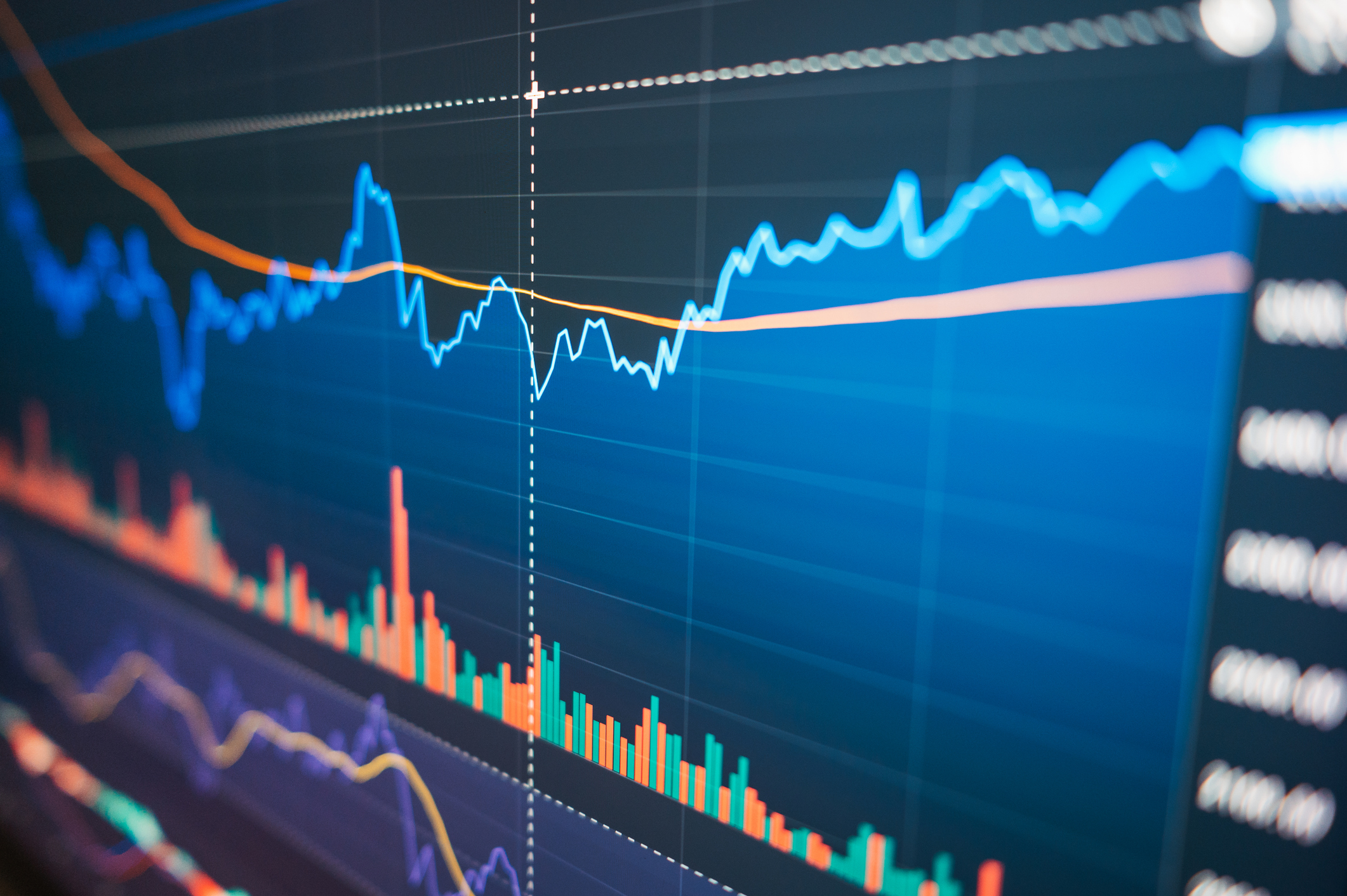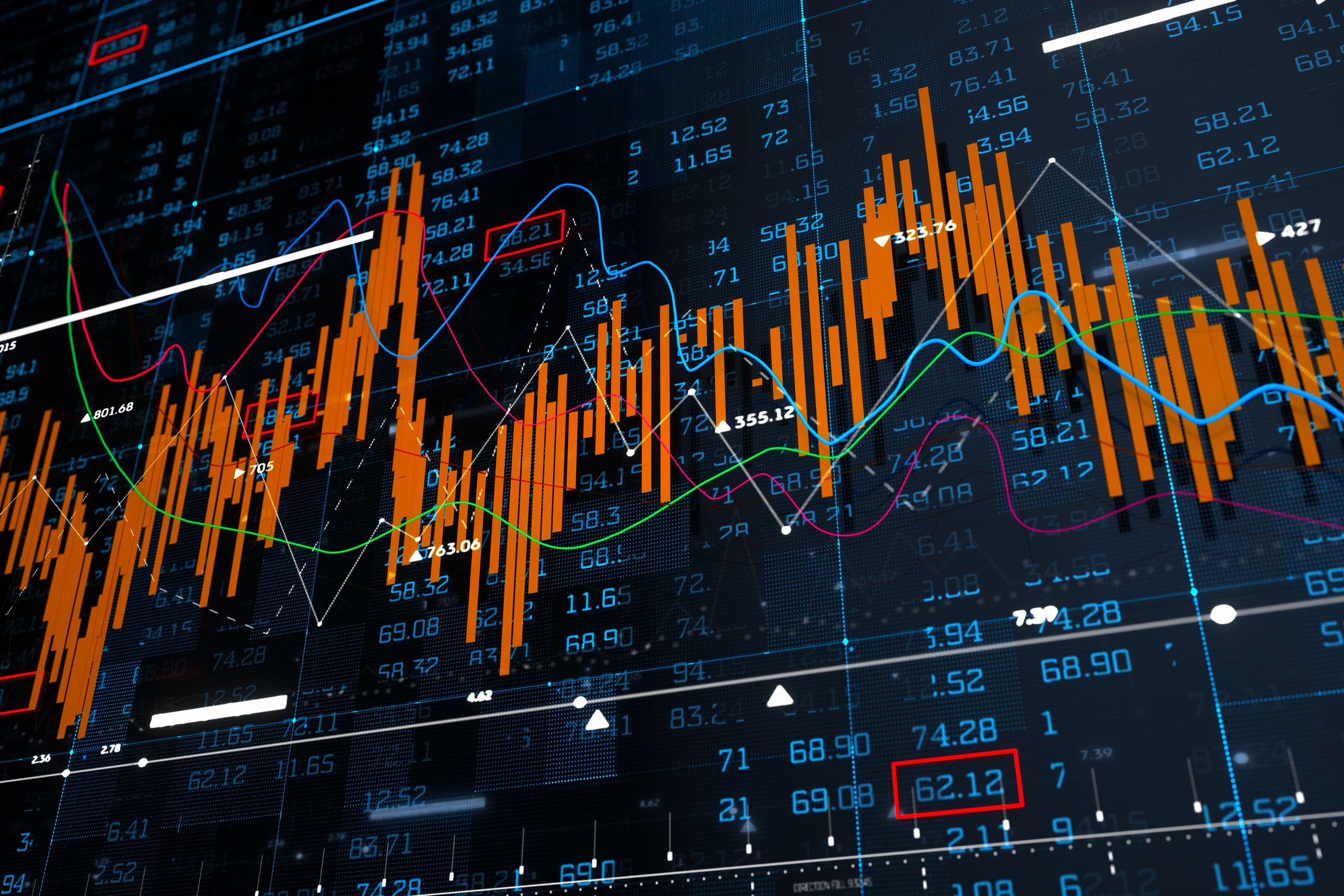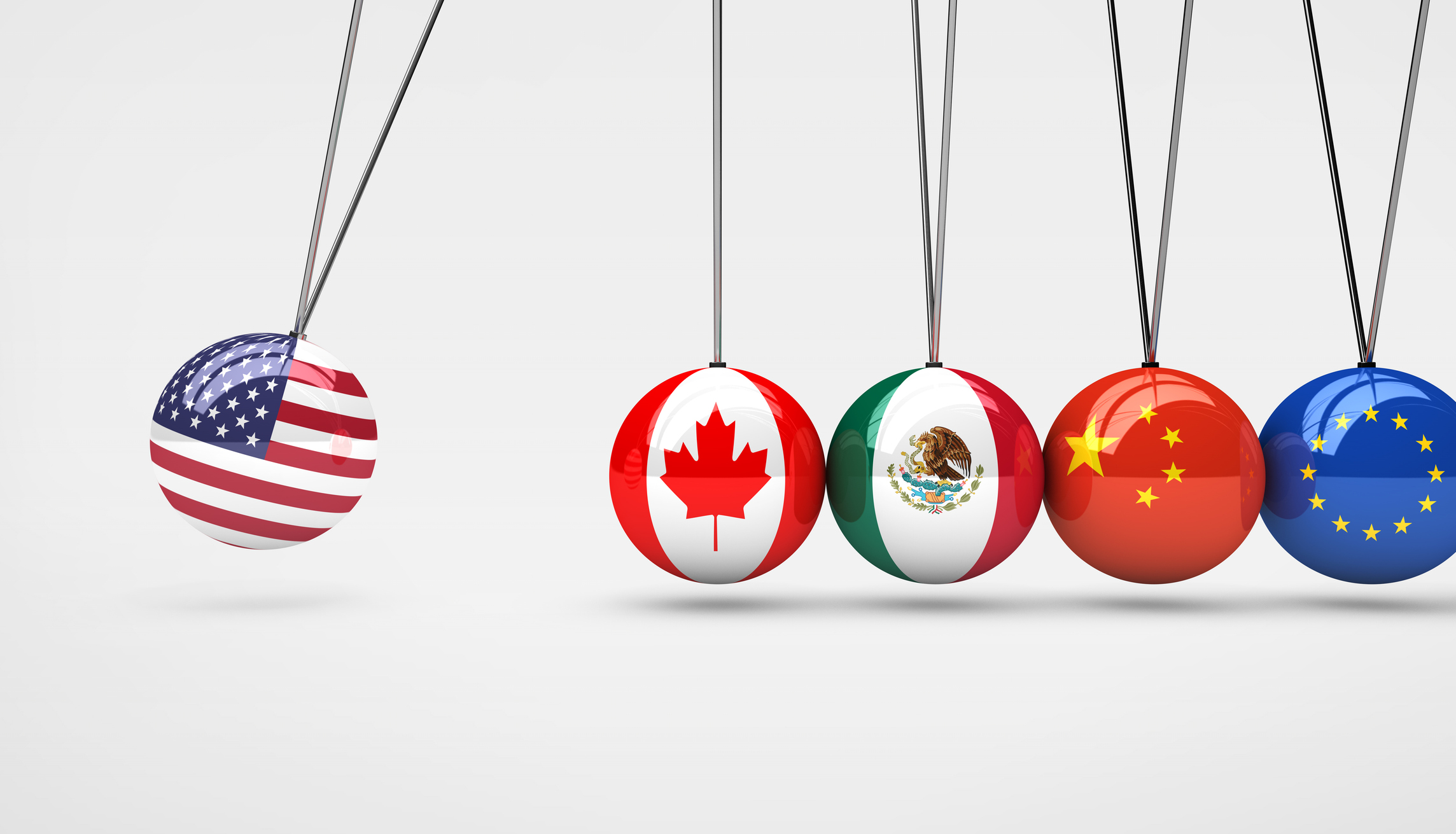Where to Invest in 2011
Despite tepid economic growth, U.S. stocks should produce respectable gains in the coming year.
To understand the investing outlook for 2011, it helps to review the year just past. Despite emerging from a long and brutal recession, the economy could muster only an anemic expansion. The most notable manifestation of the tepid recovery was a high unemployment rate that scarcely budged over the course of the year. And yet, over the past year (through November 5), the U.S. stock market managed to post an impressive 17.3% return.
SEE OUR SLIDE SHOW: 11 STOCKS FOR 2011
We think the same pattern -- a stagnant economy but decent stock performance -- may repeat in 2011. The economy should grow by little more than 2.5%, and the jobless rate could even tick up to 10%. But stocks could still return 7% to 10% over the next year, in line with corporate earnings growth and the market's current dividend yield of 1.9%. The Dow Jones industrial average should finish 2011 above 12,000.
From just $107.88 $24.99 for Kiplinger Personal Finance
Become a smarter, better informed investor. Subscribe from just $107.88 $24.99, plus get up to 4 Special Issues

Sign up for Kiplinger’s Free Newsletters
Profit and prosper with the best of expert advice on investing, taxes, retirement, personal finance and more - straight to your e-mail.
Profit and prosper with the best of expert advice - straight to your e-mail.
(See Risks to Watch below, and What to Buy Now after the jump.)
A number of factors explain the apparent disconnect between the muddle-through economy and the perky stock market. Interest rates are already at rock-bottom levels, and the Federal Reserve Board says it plans to buy $600 billion in Treasuries by the middle of 2011 to keep rates low. The balance sheets of U.S. companies, unlike those of our government and households, are in excellent shape. Profits should continue to rise moderately in 2011 and match or exceed the record level, set in 2006. With Standard & Poor's 500-stock index selling at 13 times projected 2011 earnings, stocks do not appear to be excessively valued, especially relative to bonds and cash.
And let's not forget that the canvas on which S&P 500 companies paint differs from that of the domestic economy. These firms earn 40% of profits abroad, where growth is higher than at home. David Bianco, chief stock strategist of Bank of America Merrill Lynch, calculates that profit margins of U.S. companies are far higher overseas than at home. Bianco says that four sectors in the S&P index -- energy, materials, technology and industrials -- are already generating more than half of their profits abroad. In 2010, profit increases at global companies such as Boeing (symbol BA), Caterpillar (CAT) and Coca-Cola (KO) were powered by buoyant growth in developing countries -- economies that Merrill Lynch projects will generate no less than 75% of the world's economic growth in 2011.
One thing that will change in 2011 is control of Congress, which will be split between a Republican House and a Democratic Senate. This will quite likely produce political gridlock in the nation's capital. Although some observers think that gridlock will be good for stocks because Congress won't be able to enact laws that could harm business, it could be a negative if lawmakers are unable to address a financial emergency.
Risks to Watch
We'd be remiss if we didn't outline some of the risks and lingering structural weaknesses in the economy. Recognizing risks as they come to the fore may help you make mid-course corrections in 2011 and beyond.
Volatility should remain high in 2011 because of contradictory signals from an economy that is expanding in fits and starts. Even Federal Reserve chairman Ben Bernanke frets about an "unusually uncertain" environment. He and most Fed governors think inflation is too low and clearly seek to engineer higher price increases through ultra-loose monetary policy. Because the Fed's gambit is untested, there is a risk that the inflation genie will escape the bottle. "The issue in 2011 is inflation expectations, not where inflation ends up," says Dean Junkans, chief investment officer for Wells Fargo Private Bank. "We're trying to inflate our way to growth."
Government monetary and budget policies are helping to drive the dollar lower, which aids U.S. corporate profits. The trouble is that many other governments are also cheapening their currencies to juice exports and job growth. There is a chance this race to the currency bottom, which is a form of protectionism, could degenerate into a trade war.
After years of delivering stunning gains, bonds may be a less-comfortable resting place for your money in 2011. During 2009 and 2010, individual investors poured more than $600 billion into bond funds. But a rise in long-term interest rates -- a distinct possibility in 2011 -- could result in losses for many bondholders (see our fixed-income outlook -- The Best Bets for Income in 2011).
Surveying the risks stemming from currency wars, and from rising inflation, interest rates and the sluggish domestic economy, Junkans concludes that investors must embrace global investing. "A lot of U.S. investors need to make a paradigm shift in 2011," he says. "Think of yourself as a global investor living in the U.S. rather than as a U.S. investor with some global exposure." In his portfolios, Junkans says, he's increased foreign exposure "permanently" by 50% over the past four years (for more on investing overseas, see The Best Ways to Profit from Emerging Markets.)
Why do we remain dour about the prospects for the U.S. economy in 2011? Our pessimism stems largely from that familiar trinity of linked problems -- housing, banking and busted household balance sheets -- that will dog us for a few more years.
In a normal economic recovery, housing is a key driver of expansion. But home building today remains in a depression. The housing market groans under the weight of a huge backlog of unsold and vacant homes.
Government-encouraged loan-modification programs are not working, and the foreclosure pipeline is clogged. So foreclosures continue to back up, implying that yet more houses will be dumped into a weak market. One of the more pessimistic mortgage analysts, Laurie Goodman, of Amherst Securities, thinks that ultimately 11 million borrowers -- a frightening 20% of the total -- could lose their homes absent a change in government policy.
Banks, small and big, are still in a huge mess from the real estate bust. Every Friday afternoon, the Federal Deposit Insurance Corp. rides into town and shutters a few local banks. By many accounts, this is just a tiny fraction of the number that the massively underfunded FDIC should be taking over. No wonder local businesses struggle to find lenders. Says Dave Ellison, who runs two bank-stock funds for FBR: "We should have 100 of these local banks taken over every week and given to better-capitalized, stronger hands. These dead banks don't want to lend. We need to turn their deposits into loans that will generate economic activity."
Chris Whalen, a bank expert at Institutional Risk Analytics, sees trouble ahead for several of the big banks in 2011: an avalanche of bad real estate loans coming back on the balance sheets of companies such as Bank of America (BAC) and Wells Fargo (WFC). In fact, the banks are already starting to set up new reserves for loan repurchases.
Whalen also expects the growing number of defaults and foreclosures -- we're likely less than one-fourth of the way through the total number of foreclosures -- to produce a dramatic increase in bank operating costs in 2011. Banks aren't used to cutting the grass, paying property taxes and managing a mountain of unoccupied properties.
SEE OUR SLIDE SHOW: 11 STOCKS FOR 2011
Whalen calculates that the government's policy of maintaining short-term interest rates at 0% effectively transfers $750 billion a year from U.S. savers to undercapitalized American banks, which are sitting on $1 trillion of excess reserves. U.S. households get no such break in repairing their broken finances.
Consumer credit has steadily contracted for more than 18 months, and debt as a percentage of disposable income has declined. Sadly, the bulk of the purged debt has come through defaults and personal-bankruptcy filings rather than from repayments. Deutsche Bank estimates that household debt reduction is only one-third complete; economist David Rosenberg, of Gluskin Sheff, a Toronto money-management firm, says U.S. households still need to cut their debts by more than $2 trillion.
To make matters worse, Americans are laboring to service excess consumer and mortgage debt with a diminished net worth, down $11 trillion from the peak in 2007. Home equity, the largest single source of wealth for many middle-class families, has shrunk by nearly 50%. And with one in six people out of work or under-employed, Americans can't expect much help from salary income.
No wonder the rebound in consumption has been less than half as strong as during past recessions, according to Alan Gayle, director of asset allocation for RidgeWorth Investments. Don't expect miracles from consumers in 2011.
What to Buy Now
So where do you invest if economic growth remains sluggish in 2011? One idea is to look for companies that can expand revenues much faster than the overall rate of economic growth, such as Apple (AAPL) and Marvell Technology (MRVL), a maker of microprocessors and storage devices. Or look for multinational corporations that can tap into much stronger growth abroad, especially in vibrant developing nations.
What makes blue-chip companies especially intriguing is that they appear to be attractively priced relative to the market and to their own past levels of value. "Quality companies are on sale," says Duncan Richardson, chief investment officer for stocks at Eaton Vance.
Many of these stocks yield more than ten-year Treasury notes, he says. Plus, he thinks their prices can rise 50% or more over the next few years, based on low price-earnings ratios and the likelihood that the underlying companies can boost earnings by at least 10% annually. Moreover, many of these companies come with sturdy balance sheets -- which provide a measure of safety in an uncertain economic environment -- and proven, consistent business models.
One sweet spot in the market is blue chips with direct or indirect exposure to emerging markets. For instance, Channing Smith, co-manager of Capital Advisors Growth Fund, likes Procter & Gamble (PG), Pepsi (PEP), IBM (IBM) and ExxonMobil (XOM) for their exposure to the emerging world. "Exxon has a better balance sheet than the U.S. government, and it increases its dividend each year," he says.
Michael Keller, co-manager of BBH Core Select Fund, likes multinationals that sell products that consumers in emerging markets buy on a regular basis. One of his favorites is Nestlé (NSRGY.PK), the Swiss food giant, for its powerful global brands and distribution capabilities. He also holds Coca-Cola (KO) and Baxter (BAX), which he thinks will benefit from a sharper focus on health care and hygiene in developing nations.
Sometimes you can find companies that are able both to grow faster than the economy at home and to ride brisker economic growth abroad. Apple and Marvell are two obvious examples. Jim Tierney, chief investment officer of money manager W.P. Stewart & Co., thinks he's found two more in Polo Ralph Lauren (RL) and MasterCard (MA). Ralph Lauren is expanding globally -- it now has stores in Chile, Korea and Malaysia, for example -- and extending its product line beyond clothing and into such things as watches, jewelry and sunglasses. MasterCard benefits from the growing use of plastic all over the world.
U.S. companies gain when they produce abroad or export goods and services to foreign consumers, factories or infrastructure projects. But don't ignore the ways in which companies indirectly benefit from rising emerging-markets economies. For example, Ed Maran, co-manager of Thornburg Value Fund, is high on United States Steel (X), a domestic producer, because the strength of developing nations boosts steel prices -- and profits -- and helps make U.S. manufacturers more competitive with foreign rivals.
Evan Smith, co-manager of U.S. Global Investors Resources Fund, likes Freeport-McMoran Copper & Gold (FCX). In coming years, he says, urbanization, industrialization and rising living standards in the developing world will drive up commodity prices.
Jordan Opportunity Fund's Jerry Jordan is bullish on agribusiness. As rural migrants flock to cities, and as incomes rise in countries such as China and India, diets change dramatically and demand for animal protein -- which requires lots of grain to produce -- spikes. Jordan estimates that 500 million to 800 million more residents of lower-income countries are shopping in food stores and eating in restaurants than a decade ago. He holds tractor maker Deere (DE), fertilizer producer Mosaic (MOS) and iPath DJ-UBS Grains (JJG), an exchange-traded note that tracks the price of corn, soybeans and wheat.
If you prefer funds, consider Fidelity Contrafund (FCNTX) and Vanguard Dividend Growth (VDIGX), which hold many large U.S. companies with global reach. For diversification and some protection from inflation and a falling dollar, look to Pimco CommodityRealReturn Strategy (PCRDX) (see 5 Strategies to Lower Risk). All three are members of the Kiplinger 25.
Profit and prosper with the best of Kiplinger's advice on investing, taxes, retirement, personal finance and much more. Delivered daily. Enter your email in the box and click Sign Me Up.
Andrew Tanzer is an editorial consultant and investment writer. After working as a journalist for 25 years at magazines that included Forbes and Kiplinger’s Personal Finance, he served as a senior research analyst and investment writer at a leading New York-based financial advisor. Andrew currently writes for several large hedge and mutual funds, private wealth advisors, and a major bank. He earned a BA in East Asian Studies from Wesleyan University, an MS in Journalism from the Columbia Graduate School of Journalism, and holds both CFA and CFP® designations.
-
 What to Watch for When Refinancing Your Home Mortgage
What to Watch for When Refinancing Your Home MortgageA smart refinance can save you thousands, but only if you know how to avoid costly pitfalls, calculate true savings and choose the right loan for your goals.
-
 The 10 Best Splurge Destinations for Retirees in 2026
The 10 Best Splurge Destinations for Retirees in 2026Come for the luxury vacation. Retire for the lifestyle (if the vacay goes well). What better way to test a location for retiring abroad?
-
 Builders Are Offering Big Mortgage Incentives — What Homebuyers Should Watch For
Builders Are Offering Big Mortgage Incentives — What Homebuyers Should Watch ForBuilder credits and below-market mortgage rates can ease affordability pressures, but the savings often come with trade-offs buyers should understand before signing.
-
 Nasdaq Takes a Hit as the Tech Trade Falters: Stock Market Today
Nasdaq Takes a Hit as the Tech Trade Falters: Stock Market TodayThe Dow Jones Industrial Average outperformed on strength in cyclical stocks.
-
 Trade Uncertainty Sparks Whipsaw Session: Stock Market Today
Trade Uncertainty Sparks Whipsaw Session: Stock Market TodayVolatility is making a cameo here in mid-October, a generally positive month marked by its historic stock market events.
-
 If You'd Put $1,000 Into Bank of America Stock 20 Years Ago, Here's What You'd Have Today
If You'd Put $1,000 Into Bank of America Stock 20 Years Ago, Here's What You'd Have TodayBank of America stock has been a massive buy-and-hold bust.
-
 What CEOs Say About President Trump and Fed Chair Powell
What CEOs Say About President Trump and Fed Chair PowellTop opinion-shapers and decision-makers are expressing mixed views on the evolving conflict between the White House and the central bank.
-
 Stock Market Today: S&P 500, Nasdaq Hit New Highs on Retail Sales Revival
Stock Market Today: S&P 500, Nasdaq Hit New Highs on Retail Sales RevivalStrong consumer spending and solid earnings for AI chipmaker Taiwan Semiconductor Manufacturing boosted the broad market.
-
 Stock Market Today: Powell Rumors Spark Volatile Day for Stocks
Stock Market Today: Powell Rumors Spark Volatile Day for StocksStocks sold off sharply intraday after multiple reports suggested President Trump is considering firing Fed Chair Jerome Powell.
-
 Stock Market Today: Stocks Struggle Amid Tariff Uncertainty
Stock Market Today: Stocks Struggle Amid Tariff UncertaintyBoeing dropped after China suspended new aircraft orders, while Bank of America and Citi climbed on earnings beats.
-
 Best Investments to Sidestep Trump's Trade War
Best Investments to Sidestep Trump's Trade WarThese ETFs are well-designed to weather rising U.S. protectionism and retaliatory tariffs.